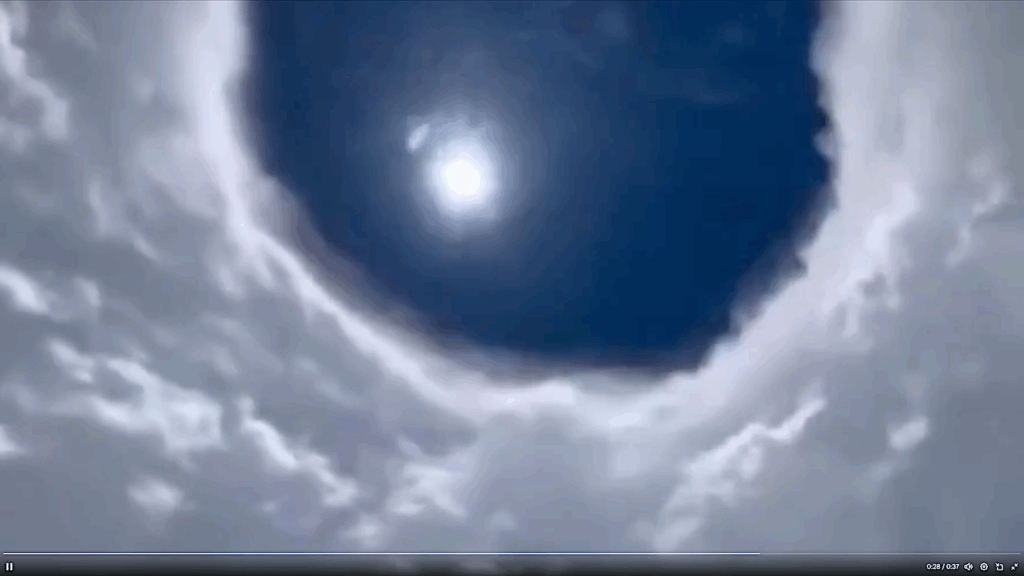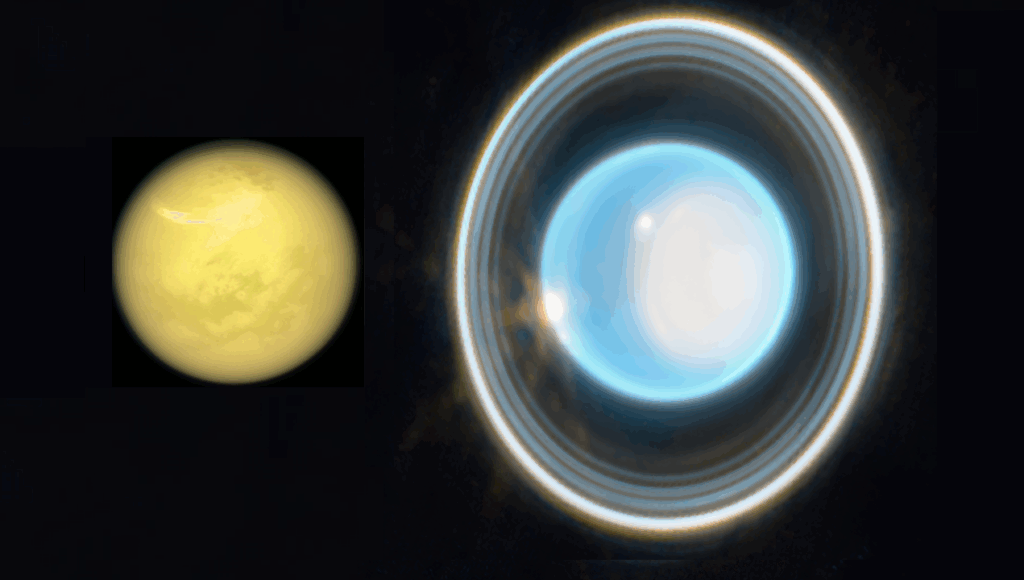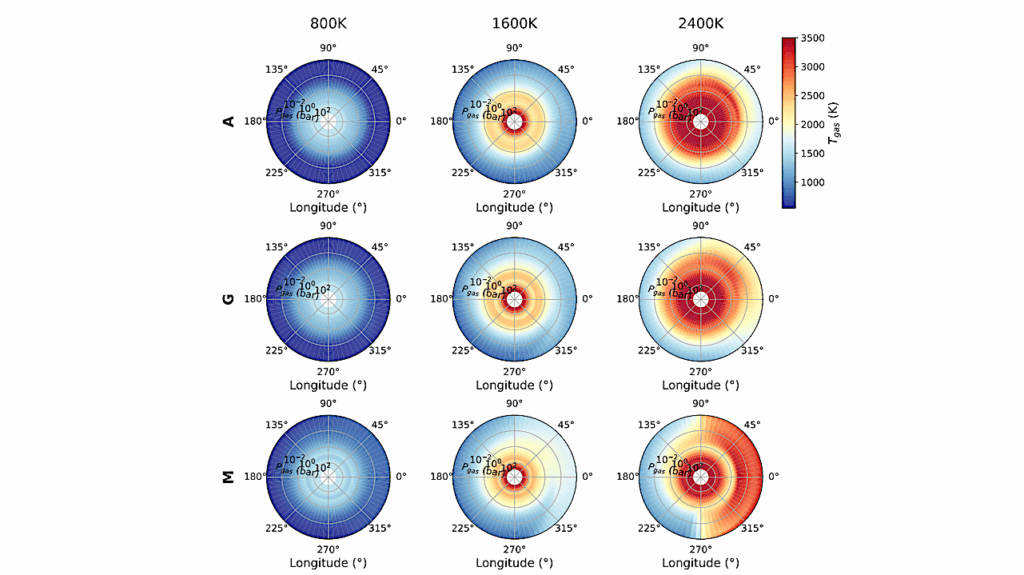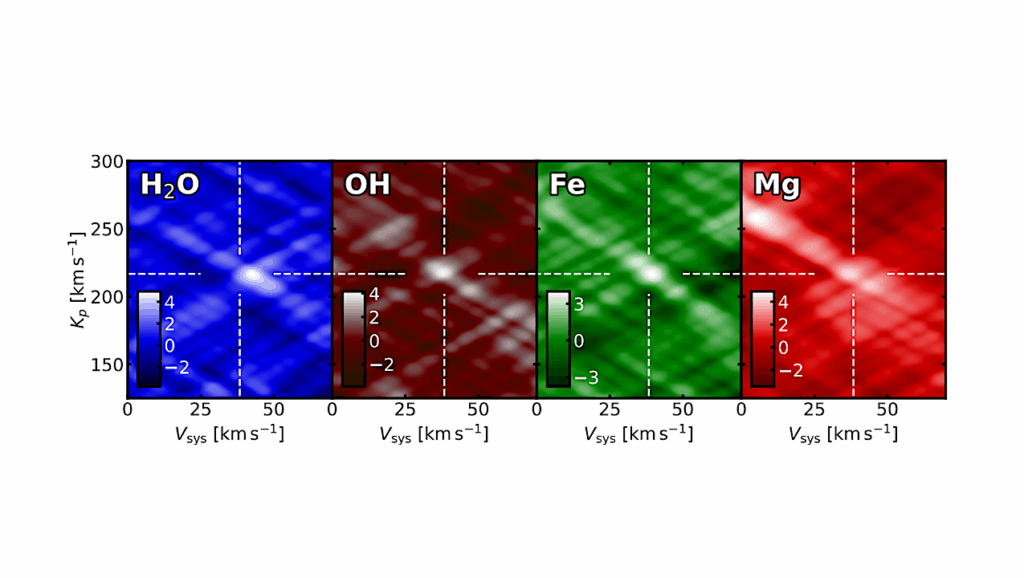Water-Ice Dominated Spectra of Saturn’s Rings and Small Moons from JWST

JWST measured the infrared spectra of Saturn’s rings and several of its small moons (Epimetheus, Pandora, Telesto and Pallene) as part of Guaranteed Time Observation program 1247.
The NIRSpec instrument obtained near-infrared spectra of the small moons between 0.6 and 5.3 microns, which are all dominated by water-ice absorption bands. The shapes of the water-ice bands for these moons suggests that their surfaces contain variable mixes of crystalline and amorphous ice or variable amounts of contaminants and/or sub-micron ice grains.
The near-infrared spectrum of Saturn’s A ring has exceptionally high signal-to-noise between 2.7 and 5 microns and is dominated by features due to highly crystalline water ice. The ring spectrum also confirms that the rings possess a 2-3% deep absorption at 4.13 microns due to deuterated water-ice previously seen by the Visual and Infrared Mapping Spectrometer onboard the Cassini spacecraft. This spectrum also constrains the fundamental absorption bands of carbon dioxide and carbon monoxide and may contain evidence for a weak aliphatic hydrocarbon band.
Meanwhile, the MIRI instrument obtained mid-infrared spectra of the rings between 4.9 and 27.9 microns, where the observed signal is a combination of reflected sunlight and thermal emission. This region shows a strong reflectance peak centered around 9.3 microns that can be attributed to crystalline water ice. Since both the near and mid-infrared spectra are dominated by highly crystalline water ice, they should provide a useful baseline for interpreting the spectra of other objects in the outer solar system with more complex compositions.
M.M. Hedman, M.S. Tiscareno, M.R. Showalter, L.N. Fletcher, O.R.T. King, J. Harkett, M.T. Roman, N. Rowe-Gurney, H.B. Hammel, S.N. Milam, M. El Moutamid, R.J. Cartwright, I. de Pater, E. Molter
Comments: Accepted for Publication in JGR Planets
Subjects: Earth and Planetary Astrophysics (astro-ph.EP)
Cite as: arXiv:2402.15698 [astro-ph.EP] (or arXiv:2402.15698v1 [astro-ph.EP] for this version)
https://doi.org/10.48550/arXiv.2402.15698
Focus to learn more
Submission history
From: Matthew Hedman
[v1] Sat, 24 Feb 2024 03:20:33 UTC (3,218 KB)
https://arxiv.org/abs/2402.15698
Astrobiology, Astrochemistry,








